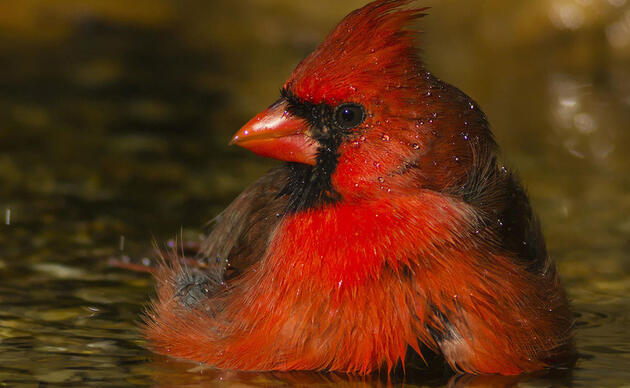by Richard Valdez, January 8, 2021.
From first-time birders to experts, from young birders to birders young at heart, the North Shore Birding Festival’s event “Birding for Millennials and Others” brought nature enthusiasts on a socially-distant adventure. Our small group of twelve met in early December to take a birding stroll around the North Shore trailhead before driving out to Lake Apopka’s North Shore.
As a new birder myself, I appreciated that leaders made sure everyone was engaged. When field trips are designed around younger audiences, trip leaders share their passion for the outdoors and their excitement becomes contagious. Our guide’s collective knowledge about the landscape and wildlife use of the environment was awe-inspiring. This type of engagement is a valuable tool for future conservationists displaying how different species (not just birds) utilize the landscape.
We were exposed to so many different species during our trip. We learned how to identify the differences between a Turkey Vulture and a Black Vulture flying high above in the clear, dry air. When we saw an American Kestrel perched on a power line, one of our tip leaders mentioned its unique hunting style, tracking rodent urine in the ultraviolet spectrum. We saw a box turtle concealed in its shell surrounded by live oaks, native shrubs, and palmettos. Butterflies fluttered across our path. On our drive, we spotted a pair of Bald Eagles, the female towering over the male at the mouth of its nest located in a mature longleaf pine. With the water reflecting the bright blue sky above, all packed into a marsh habitat were Ring-necked Ducks, Blue-winged Teals, Glossy Ibis, Little Blue Herons, plus Greater and Lesser Yellowlegs. And to end the day we saw a bobcat clutching a baby alligator in its mouth while walking across the gravel road. These memories are ingrained in my mind and are images I am not likely to forget for a long time.
Interactive educational activities can change people’s perception of the outdoors, and the more we experience community interactions within an ecosystem, the more we are witness to how crucial the care for these valuable habitats are.
Wildlife guidebooks cannot show you the secretive nature of a Sora, pecking away at the edge of the water and using the tall brush to conceal most of its body; nor can they display how a Savannah Sparrow utilizes the dense bushy bluestem when it preens. Each habitat has a role to play, each species fits into its niche.
The event provided an opportunity to bird with people my age. Older generations - though they have a wealth of life experiences - can have a more difficult time relating to young people, which can lead to a disconnect. When you see younger people out there, it gives you a sense of hope that adventuring in the outdoors has a long future ahead of it. For me, trips and tours specifically designed for a younger audience feel fun, engaging, relevant, inspirational, and current.
Perhaps most importantly, field trips designed around youth engagement present a call to action: to adventure, to explore, to experience the natural landscapes wherever they may be, and to share what we have learned within these places. Only then can we realize how connected we are to the landscape’s intrinsic value, and how other species depend on its maintenance, protection, and conservation.
To learn more about the Conservation Leadership Initiative, click here.
Stay in Touch!
Show your love of birds today. Subscribe to receive email updates about Audubon's conservation work and hear about opportunities to help birds in your area or nationwide.




